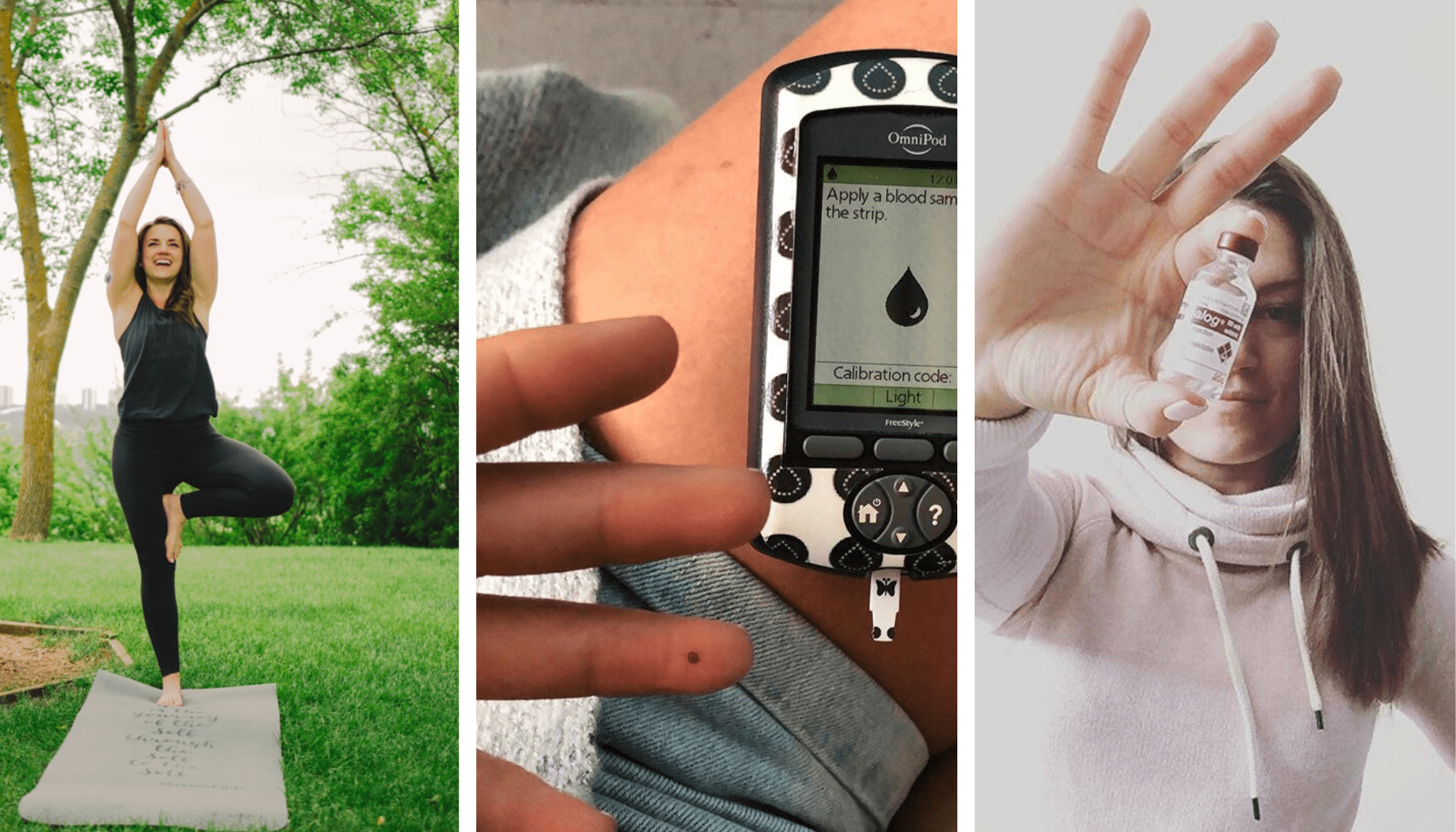
My name is Amanda, and I have a menstrual cycle. I also have Type 1 Diabetes.
Though these two statements have been true for about the same amount of time, it took several years to realize the transformation my body goes through each month also affects my Type 1 Diabetes. While you probably already know almost anything can affect Type 1 – stress, sleep, temperature, types of foods, meal times, caffeine, anxiety, activity, etc. etc. – adding “menstrual cycle” to the list creates another body-specific, out-of-our-control variable in the ever-present Type 1 lifestyle.
For my personal cycle, the week before my period – as my body is craving high fat foods and slow yoga poses – I need higher amounts of insulin. Once I start bleeding, I have to cut my insulin intake back by (around) 25%. Since I’ve been tracking this, I’ve connected to other people with periods and Type 1 Diabetes. From my small sample size, most people agree that having a period affects their insulin usage and their diabetes, but there is no consistent way in which the period affects them. Some people need more insulin, some people need less – it all depends on their body. Just like no two Type 1s are the same, no two periods are the same either, it seems.

My period USUALLY flows as follows: The week before my period, I increase my lantus amount by taking an additional 4 units. Once my period arrives, I cut my lantus back 6 units. I slowly increase my lantus one unit / day (or so) to arrive back at my regular lantus amount, and hold it steady until the pattern repeats. Because I use multiple daily injections, I don’t adjust my fast-acting insulin ratios during this time (though, when I’m eating a ton of ice cream the week before, you can bet I am taking more fast-acting insulin then that week, too). This pattern is something that works for me, but it took some time to figure out. And it doesn’t work perfectly every time – each cycle can be slightly different and require its own adjusting.
What does that mean for you, as a parent of a young human with Type 1 about to hit their menstrual cycle? You can look for unidentified fluctuations in insulin needs – this might be an indication that a period cycle is starting. Of course, insulin needs can fluctuate for many reasons: starting a sports’ team, playing outside less, a big exam coming up in school, etc. But if you’re seeing signs for the start of a cycle, and also greeted with unexplained adjustments in insulin needs, know that this is totally normal! And, unfortunately, just another variable associated with Type 1. But congrats (and good luck!) for the new life phase for your young human! Using their Type 1 to help them track their menstrual cycle can be a powerful and informative way for them to understand more about all aspects of their body.
What does this mean for you, an adult with T1D and a menstrual cycle? Start tracking your insulin needs throughout the month; you might find a connection to your menstrual cycle! There is an entire wellness trend right now for humans and their cycles – tons of data and resources have revealed how to eat, exercise, and sleep in tune with your cycle to best support your body as you flow. These resources encourage different foods, exercise levels, and sleeps to meet your hormones each week of the month, providing a strong, smart foundation for you throughout your cycle.
I have noticed, too, that when I am regularly taking a birth control that works with my body, it also works to level out my insulin fluctuations surrounding my period. My cycle is still there, and my symptoms (craving salty foods, being more emotional, needing more insulin) are still there, too. But they are lessened. Birth control options regulate hormone in your body, and so they can affect insulin-related menstrual cycle needs, too. Again, it is all about your body and what works for you. As with anything, knowledge is power in this scenario – the more you know about how your body functions and feels, the better prepared you can be for whatever highs and lows (and flows) come your way.
As someone with T1D, it is essential to be aware of my body and how I feel. There is a level of conscious commitment in working to notice and recognize all of the signs from my body. This can be exhausting, but it is also rewarding. I’ve adapted this level of awareness to my menstrual cycle, and it’s helped me realize its connection with my T1D, and feel more balanced, centered, and less surprised by any changes in my body the weeks surrounding my period.








